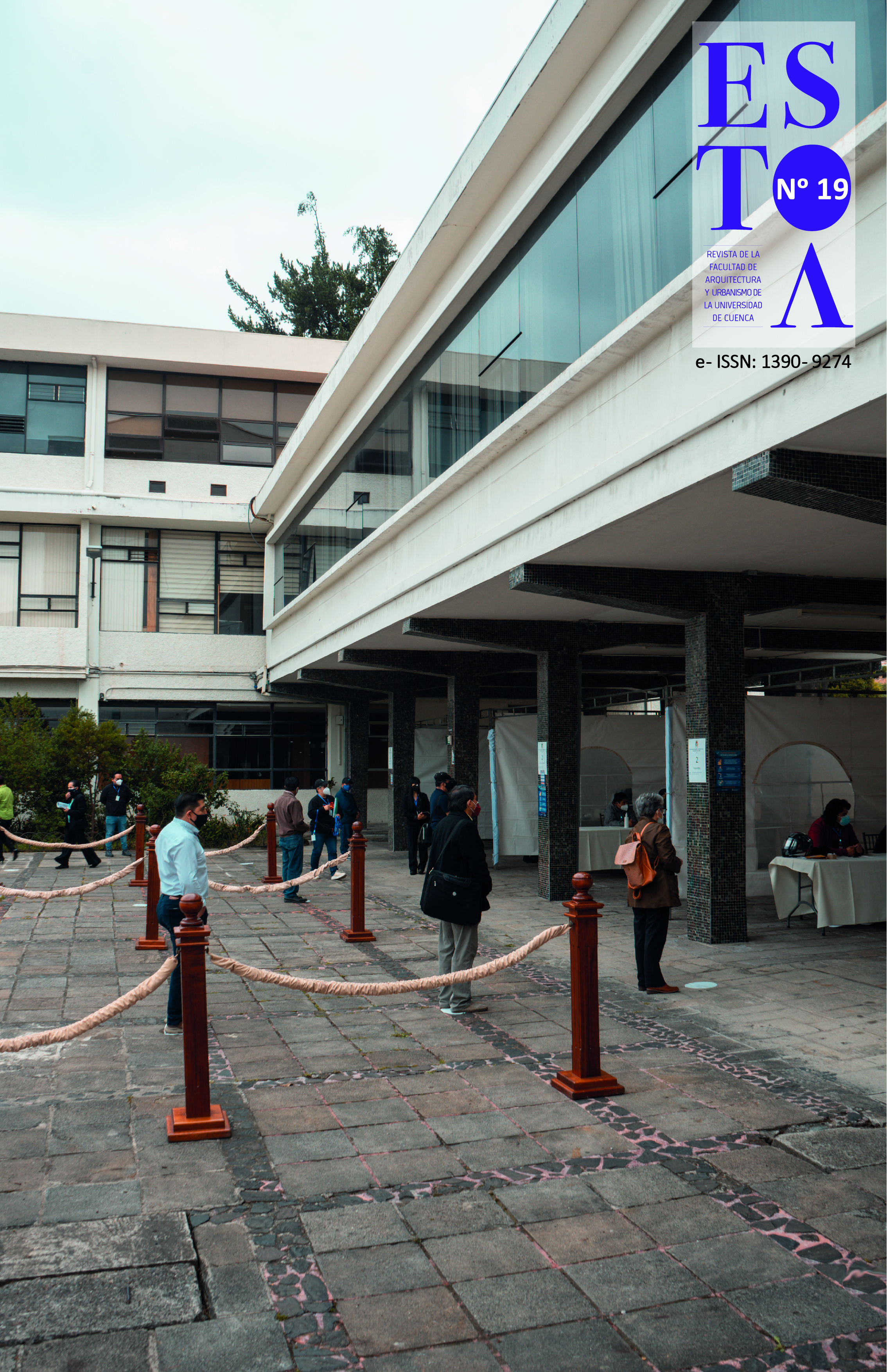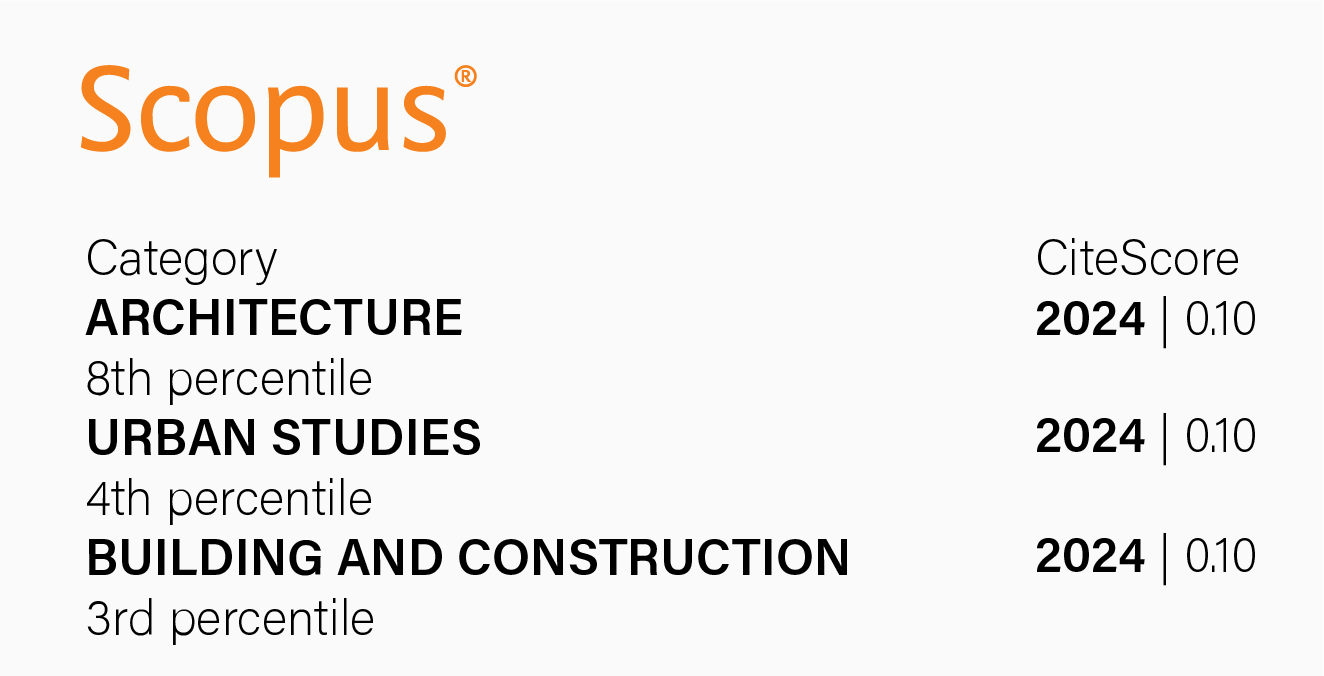The dissolution of the boundaries in the religious space. The Forest Chapel of Heikki and Kaija Siren
DOI:
https://doi.org/10.18537/est.v010.n019.a02Keywords:
Religious space, boundaries, Siren, Bryggman, Vatican ChapelsAbstract
Finnish architects, Heikki and Kaija Siren, built a small chapel in 1957 on the Otaniemi Technology Campus, expressing Nordic linkage to the landscape, under the values of naturalistic rationalism. They created a space of intimacy, in the middle of nature, where the faithful could delve inside. The chapel that Erik Bryggman had previously built for the Turku Cemetery, with its side glass screen, served as an essential reference, and the Sirens, in the development of their project, gradually modified the opening to the landscape until they reached a full spatial sequence, which begins and ends in the forest. The research deepens into this masterpiece of modern post-war architecture and the relevance it has had in the creation of other contemporary and later liturgical spaces, until reaching contemporary Vatican chapels, where the religious space is also singularly linked to the place, dissolving its limits significantly.
Downloads
References
De Juan, A.G. (06/04/2018). Pabellón de la Santa Sede en la Bienal de Venecia 2018 por Carla Juaçaba. XVI Edición de la Exposición Internacional de Arquitectura. La Biennale di Venezia 2018. Metalocus.
https://www.metalocus.es/es/noticias/pabellon-de-la-santa-sede-en-la-bienal-de-venecia-2018-por-carla-juacaba
Espuelas, F. (1999). El claro en el bosque. Reflexiones sobre el vacío en la arquitectura. Fundación Caja de Arquitectos.
Fernández, N. y Jiménez, A. (2014). Un altar en la naturaleza. La Capilla del Bosque de Heikki y Kaija Siren en: D. Villalobos, I. Rincon y S. Pérez (Eds.). Arquitectura, Símbolo y Modernidad (pp. 215-231). Real Embajada de Noruega en España, Universidad de Valladolid.
Fernández-Cobián, E. (2017). ¿Son protestantes nuestras iglesias modernas? La recepción en España de la capilla del Politécnico de Otaniemi. Actas de Arquitectura Religiosa Contemporánea, 5, 66-85. https://doi.org/10.17979/aarc.2017.5.0.5143
Fernández-Galiano, L. (Ed). (2002). Recintos Religiosos. A&V monografias, (95), 2.
Gil, P. (1999). El Templo del S. XX. El Serbal, Colegio de Arquitectos de Cataluña.
Jové, J. M. (2003). Alvar Aalto: proyectando con la naturaleza. Universidad de Valladolid.
Levene, R. C. y Márquez C. (Eds.) (1994). El Croquis, 44 + 58: Tadao Ando 1983-1993.
López-Peláez, J. M. (2002). La arquitectura de Gunnard Asplund. Fundación Caja de Arquitectos.
López-Peláez, J. M. (2005). Cruces: La Capilla de los Siren en Otaniemi. En L. Ibáñez (Coord.). Capilla de Otaniemi: Heikki & Kaija Siren (pp. 9-24). Ministerio de Vivienda.
Luciani, D. y Puppi, L. (Dir.) (2009). The Otaniemi Chapel. Jury Report. En The XX International Carlo Scarpa Prize for Gardens, 2009, The Otaniemi Chapel (pp. 8-13). Fondazione Benetton Studi Ricerche.
Meri de la Maza, R. (11/02/2019). Capilla Vaticana para La Biennale di Venezia 2018 por Eduardo Souto de Moura. TC Cuadernos.https://www.tccuadernos.com/blog/capilla-vaticana-souto-de-moura/
Norri, M. R. (2005). Una capilla en el abrazo de la Naturaleza. En L. Ibáñez, (Coord.) Capilla de Otaniemi: Heikki & Kaija Siren (pp.- 25- 34). Ministerio de Vivienda.
Nikula, R. (Ed.) (1991). Erik Bryggman architect, 1891- 1955. Suomen rakennustaiteen museon monografiasarja.
Pallasmaa, J. (1999). Una confesión arquitectónica. En Meditaciones sobre el Silencio. Juhani Pallasmaa: objetos y diseños arquitectónicos (pp. 5-7). Ministerio de Fomento.
Pallasmaa, J. (2009). The spaces and images of faith. The Finnish church as an experience. En D. Luciani y L. Puppi (Dir.) The XX International Carlo Scarpa Prize for Gardens, 2009, The Otaniemi Chapel (pp. 93-106). Fondazione Benetton Studi Ricerche.
Quantrill, M. (2005). Finnish Architecture and the Modernist Tradition. E & FN Spon.
Royo Márquez, M. (2014). Pietilä. El proyecto de Dípoli. [Tesis de doctorado, Escuela Técnica Superior de Arquitectura de Madrid].
Schulz, B. (2011). 1956-57… In die Jahre gekommen Kirche Zur Heimat in Berlin-Zehlendorf, db deutsche bauzeitung, db. https://www.db-bauzeitung.de/db-themen/db-archiv/in-die-jahre-gekommen-kirche-zur-heimat-in-berlin-zehlendorf/
Sebastián, P. (05/06/2018). La Capilla de la mañana de Flores & Prats Architectes para la Bienal de Arquitectura 2018. Metalocus. https://www.metalocus.es/es/noticias/la-capilla-de-la-manana-de-flores-prats-arquitectes-para-la-bienal-de-arquitectura-2018/
Siren, H. (2009). Wood, Nature and Architecture. En D. Luciani y L. Puppi (Dir.) The XX International Carlo Scarpa Prize for Gardens, 2009, The Otaniemi Chapel (pp. 26-28). Fondazione Benetton Studi Ricerche.
Tucci, F. (1994). Natura e memoria nell´architettura finlandese/ Raili e Reima Pietilä. Parámetro, (205), 61- 67.
Walden, R. (1998). Finnish Harvest. Kaija and Heikki Sirens´Chapel Otaniemi. Otava Publishing Company.
Downloads
Published
Versions
- 2021-06-09 (2)
- 2021-01-27 (1)
How to Cite
Issue
Section
License
The Journal declines any responsibility for possible conflicts derived from the authorship of the works that are published in it.
The University of Cuenca in Ecuador conserves the patrimonial rights (copyright) of the published works and will favor the reuse of the same ones, these can be: copy, use, diffuse, transmit and expose publicly.
Unless otherwise indicated, all contents of the electronic edition are distributed under a Creative Commons Attribution-NonCommercial-ShareAlike 4.0 International License.




